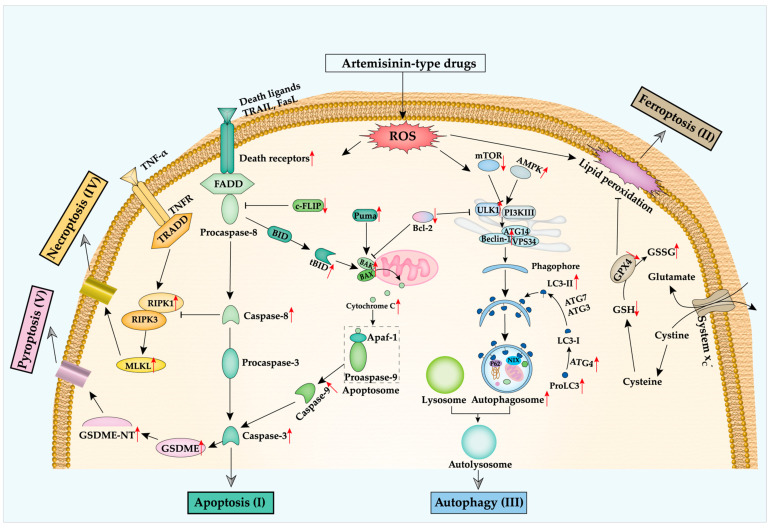Figure 2.
Artemisinin-type drugs influence several RCD pathways. The red arrows represent the upregulation or downregulation of certain key players on protein level. (I) ART-type drugs produce ROS resulting in increased expression of death receptors, and cleavage of caspase-3 and caspase-8, and decreased c-FLIP expression, leading to stimulation of the extrinsic apoptosis pathway. Meanwhile, ROS itself also triggers the intrinsic apoptosis pathway by upregulating the expression of tBID, BAX/BAK, inducing the release of Cytochrome C to activate caspase-9. (II) ROS accumulation from ART-type drugs results in lipid peroxidation to induce ferroptosis. Besides, the disruption of the oxidative homeostasis maintaining system by ART-type drugs leads to downregulation of GPX4 expression. (III) The oxidative stress from ART-type drugs initiates the formation of the phagophore via activating the AMPK pathway and assembling the VPS34 complex, resulting in autophagy. ART-type drugs also increase MLKL pore formation to induce necroptosis (IV), or GSDME-NT pore formation to induce pyroptosis (V).

